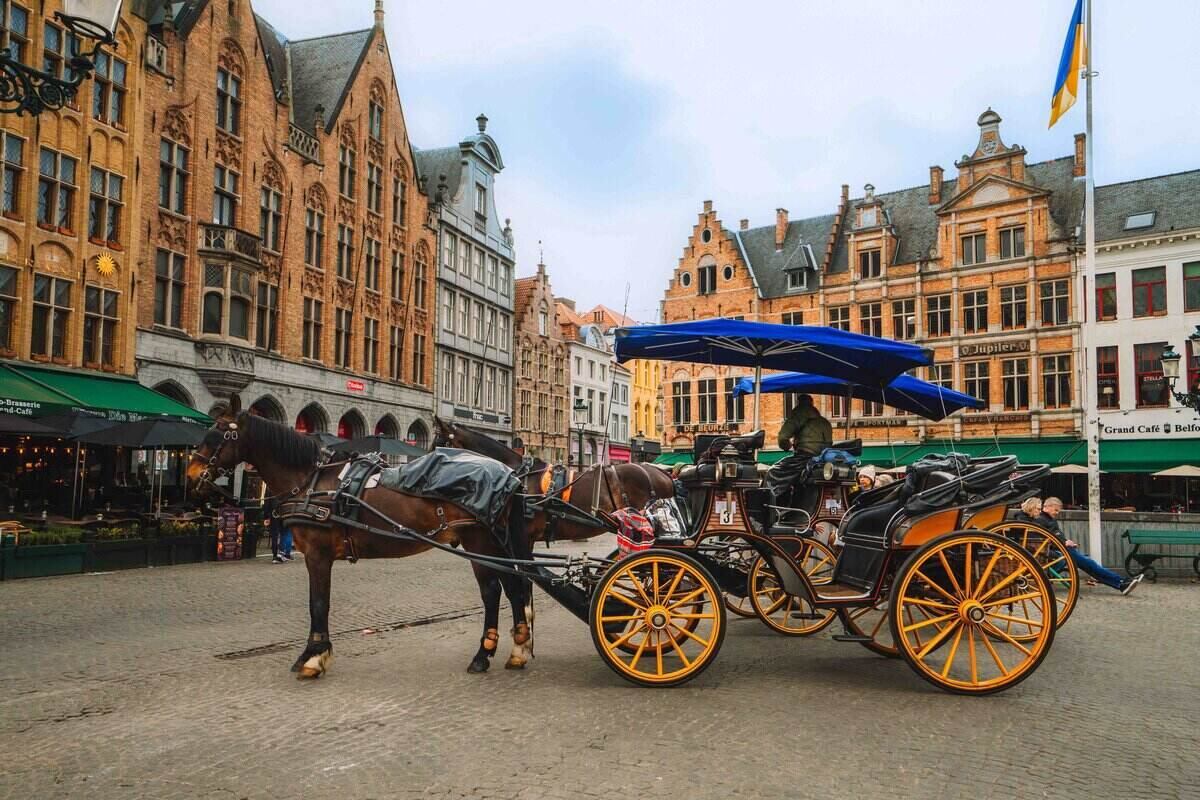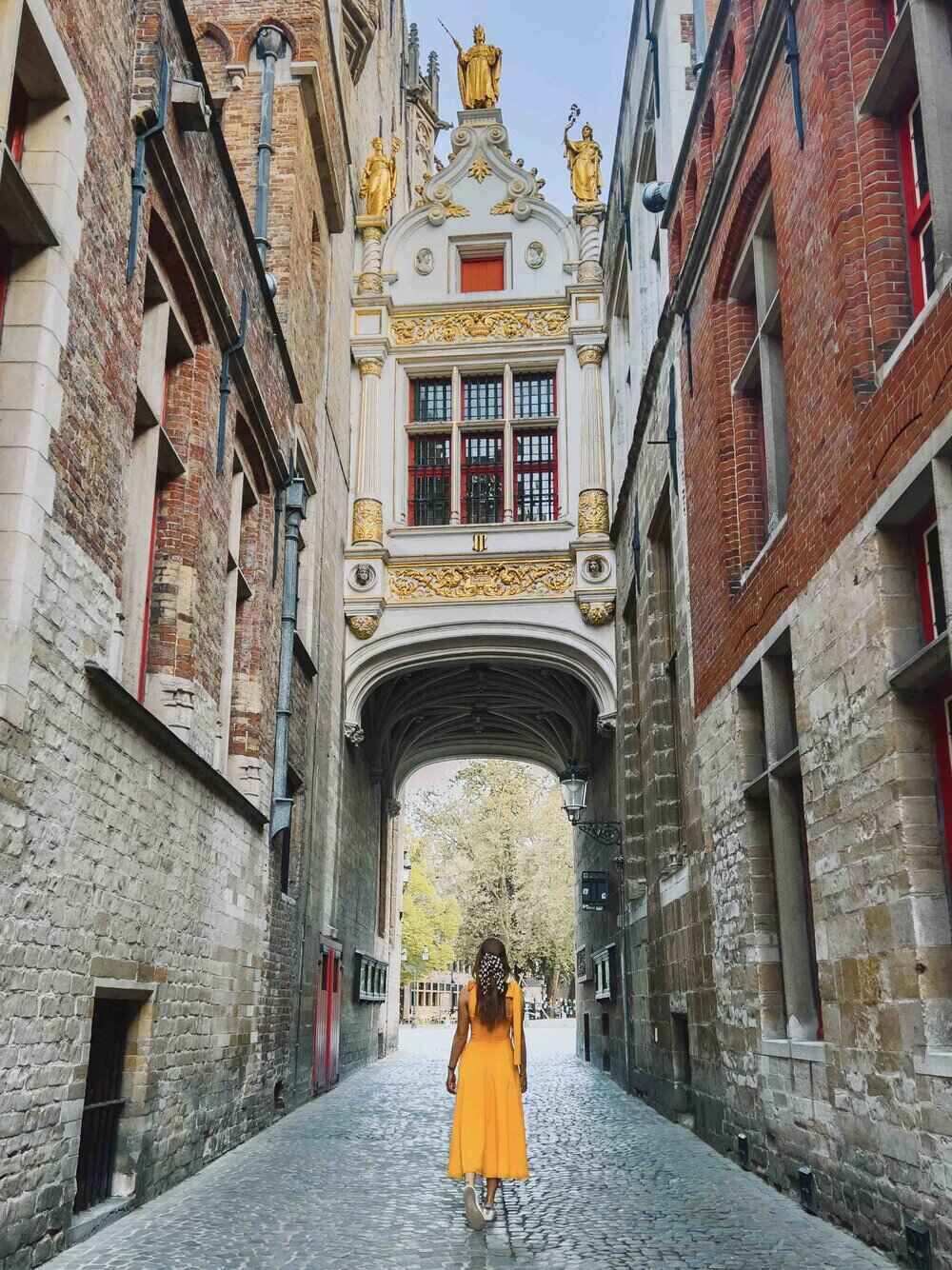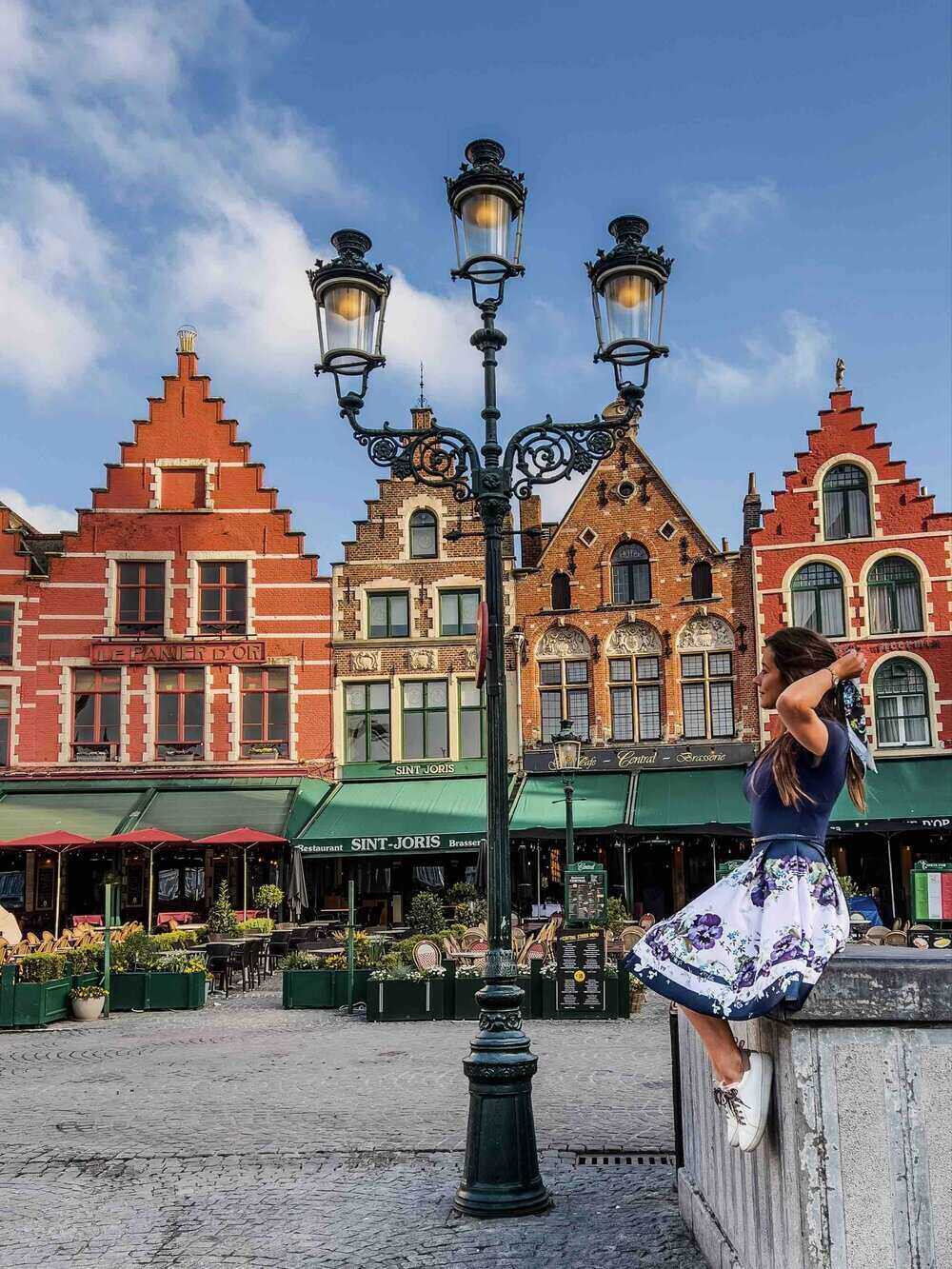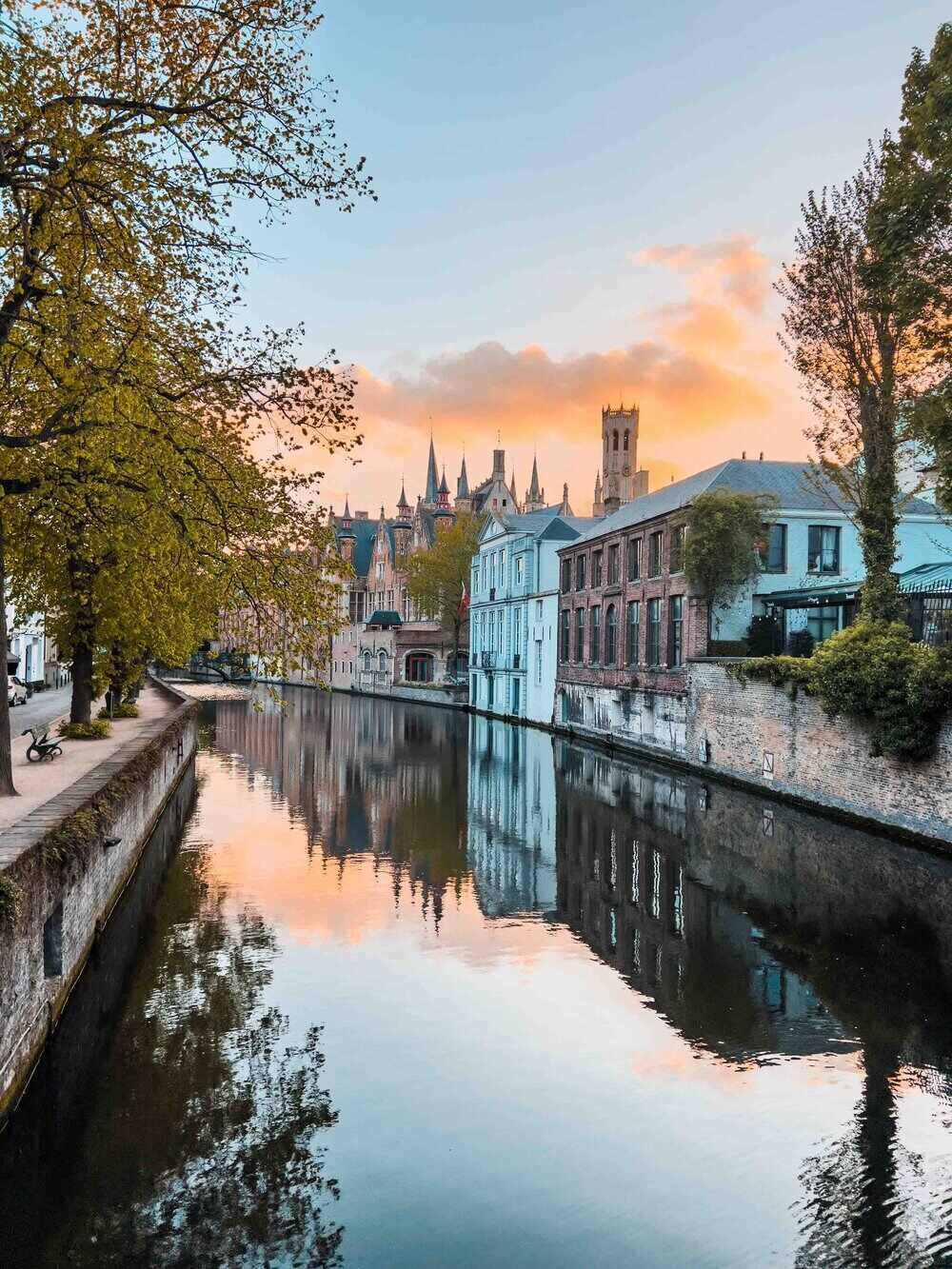About the author
Jessie Moore is a luxury travel expert with years of experience travelling the world to find the best destinations, hotels and adventures.
Let’s explore Bruges
For me, visiting Bruges is like stepping into a real-life fairytale. I love the magic that oozes from every corner of the city and the atmosphere is utterly enchanting.
In my Bruges travel guide, I share my top recommendations for when to visit, how to get around and places to see. Plus my favourite spots for a good beer and a bite to eat!
About the author
Jessie Moore is a luxury travel expert with years of experience travelling the world to find the best destinations, hotels and adventures.
A pocket-sized European city with a big heart, the quaint city of Bruges is a real-life fairytale destination. As one of the most well-preserved medieval cities in Western Europe, visiting Bruges is a chance to travel back in time. In fact, the historic centre of Bruges is so historically significant that it has been appointed a UNESCO World Heritage Site.
Full of quaint charm and a fairytale aesthetic, Bruges is an intimate city that doesn’t try to do too much. Known affectionately as the Venice of the North, its 80 bridges frame the meandering canals which intertwine with the winding cobbled streets. Discover pockets of green throughout the city, from small hidden gardens to the larger grassy expanse which surrounds this Belgian city.
The beating heart of Bruges lies in the Markt Square, flanked by gorgeous Flemish architecture and overlooked by the towering Belfry. Architecture and aesthetics aside, the food and drink specialities of Bruges include fries, waffles, chocolate and beer – need I say more?
Whether you’re visiting for the architecture and ambience, the canals and culture, or the waffles and windmills, unearth the beguiling city in my Bruges travel guide.
Want to save up to 25% on hotels?
Subscribe to the Pocket Wanderings newsletter and get immediate access to my guide on how to save money on flights and hotels. Our weekly emails are filled with adventure inspiration, insider travel tips and exclusive discounts.
If travelling from the UK, the easiest way to get to Bruges is by Eurostar from London to Brussels. Alternatively, travelling by plane is the most convenient option for those travelling from further afield.
By plane: The closest airport to Bruges is Brussels Airport, approximately 110km from Bruges. Direct flights are available from London, US, Canada, and more.
From the airport, you can get the train to Bruges, which takes around an hour and a half. Or a taxi should take around 75 minutes, although this is likely to be more expensive.
By train: If you’re travelling from London in the UK, getting the train is by far the easiest option. Catch the two hour Eurostar train from London St Pancras to Brussels Midi. Then it’s a direct train from Brussels to Bruges, which takes around one hour.
Brussels Midi station is well-connected to a number of other European countries, including France, Netherlands, Germany and Luxembourg.
By car: If you’re travelling from a nearby neighbouring European country then driving to Bruges is another option. If coming from the UK, you can take the Eurotunnel over to France and then drive into Belgium. Note that parking is limited in Bruges and you certainly don’t need a car to get around, as the city is small enough to get everywhere on foot.
HOTEL GUIDE
15 best luxury hotels in Bruges
Discover my pick of the best luxury hotels in Bruges, Belgium – whether you’re after canal views, a sumptuous spa, fine dining or a stylish bar.
FOOD GUIDE
20 Michelin-star restaurants in Bruges
For an unforgettable gastronomic experience, here is my handpicked selection of the best Michelin restaurants in Bruges.
Bruges is a wonderfully compact city. I think that being so small is part of its charming, fairytale appeal. Plus, it also makes Bruges a great option for solo travellers, as there’s no need to navigate any complex public transport systems.
By foot: In my opinion, the only way to explore Bruges is by wandering its unspoiled streets on foot. You can reach even the furthest corners of the city relatively easily by walking. If you struggle with mobility then it’s worth noting that there are cobbles everywhere. It’s all part of the city’s quaint charm, but can make accessibility difficult.
By bus: The bus offers a convenient way of getting from the railway station to the centre of Bruges. They leave every 5-10 minutes and take passengers to the Market Square. There’s no need for a bus once you’re in the city centre, but it can be handy for station transfers.
By horse & carriage: Live out the ultimate fairytale fantasy and make a one-off trip by horse and carriage. The horses are well looked after so there’s no need to sacrifice any ethics for a romantic horse & carriage ride through the city. It’s not the cheapest way to see the city, but it’s definitely the most memorable.

By bike: Cycling is a fantastic way to explore the outskirts of the city, where you’ll find quaint villages and rolling green countryside. You can get around the city centre by bike – and many of the locals do just that – although I think the main hub of Bruges is still best explored on foot so you can take in all the sights.
By taxi: The only time you’ll really need a taxi in Bruges is to get from the station to the centre. If you don’t fancy the bus, there are usually plenty of taxis available at the station. It’s a relatively short journey so prices are generally quite reasonable.
By car: You simply don’t need a car to explore Bruges. If you’re doing a road trip then it’s no problem to arrive by car. But once you’ve parked up, you’re not going to need it until the end of your Bruges excursion – unless you’re doing a day trip of course!
Note that most attractions are closed on Mondays and that a lot of restaurants don’t open until the latter part of the week.
There are still plenty of options for dining out, but you’ll need to book in advance to guarantee a spot. This does mean it’s generally a little quieter from Monday to Wednesday.
Personally, I think it’s worth the more limited dining options for a more peaceful experience of the city.
Spring
One of the key shoulder seasons, I think spring is a wonderful time to visit Bruges. The city becomes adorned with colourful flowers in every nook and cranny.
European cities don’t get much prettier than Bruges in spring. If you’re visiting in spring, be sure to stop by Beguinage, as it will be covered in a blanket of white and yellow daffodils. Aim for late spring to benefit from fairer weather.
SUMMER
As you’d expect, summer is the most popular time to visit Bruges. The weather is at its best, although still mild and not scorching. Temperatures tend to hover around 19-20 degrees Celsius and rain is less likely – although still pack an umbrella!
The warmer weather does mean a lot of tourists. As Bruges is such a small city, the high volume of tourists is, unfortunately, very noticeable.
AUTUMN
Another shoulder season, autumn is a great time to visit if you’d prefer to avoid the droves of tourists that the summer months attract. As the leaves turn golden brown, the city takes on a cosy charm.
Be sure to visit parks like Minnewater to get the full autumnal experience. If you’re visiting in late autumn, be aware that the weather will be chilly and rain quite likely. So pack accordingly!
WINTER
The main reason that people visit Bruges in winter is due to the delightful Christmas markets. Wander the pretty wooden chalets, go for a skate on the ice rink, and indulge in traditional street food and drink.
As you can imagine, the weather will be cold. If you’re lucky, you may get to see Bruges covered in a glistening blanket of snow for the ultimate postcard-perfect visit.
DESTINATION GUIDE
20 amazing things to do in Bruges
From museums and markets to waffles and walks, here is my guide to the very best things to do in Bruges, the ultimate fairytale town in Belgium.
CITY GUIDE
Brussels or Bruges: which to visit?
Trying to decide whether to visit Brussels or Bruges? I share the pros and cons of both beautiful Belgian cities to help you decide which to visit.
I’d say that three nights and two full days is a good amount of time to spend in Bruges. Given its small size, you may run out of things to do if you spend longer there. An alternative option is to add on another night and spend your third day in pretty Ghent, which is just a half hour train ride away.
Due to its small size, the city can feel overwhelmed with tourists during peak times. My recommendation? Do not miss out on an early morning stroll around the city, before the crowds descend. It’s the best time to see the unspoiled streets and remarkable beauty of Bruges in all its glory.
Bruges is an excellent destination for solo travellers. In fact, I often recommend it as a great starting point for anyone new to the world of solo travel. You don’t need to navigate any complex public transport systems, English is widely spoken, and it’s a very safe city with low crime rates.
Bruges is a relatively expensive city, especially when it comes to food and drink. Just be sure to eat away from the tourist areas (definitely don’t eat on the Market Square) and the prices will be less inflated.
There are currently two Michelin star restaurants in Bruges: Zet’Joe by Geert Van Hecke and Sans Cravate. Bruges is also home to two Bib Gourmand restaurants and 15 other Michelin recommended eateries.
There are some exceptional restaurants in Bruges by exciting, innovative chefs. If you love a spot of fine dining, you’ll find plenty of options in Bruges. Just make sure that you book ahead of time.
The main Christmas market takes place in the central Markt, where there is also a tempting ice rink. A second Christmas market takes place in the Simon Stevinplein square.
Wander the cosy wooden chalets, indulge in delicious home-made treats, and do a spot of Christmas shopping. It’s guaranteed to be an unbeatable festive atmosphere.
Belgium is famous for waffles, chocolate, beer and fries – all the healthy treats in life! It follows that all of Belgium’s specialities can be found and sampled in Bruges.
The historic centre of Bruges is one of the city’s main appeals. In fact, it was designated a UNESCO World Heritage Site in 2000, owing to its layout being the same as it was in the Middle Ages.
The mediaeval centre is a hub of gothic architecture and quaint streets, all with a lively city feel.
Be sure to wander the historic centre on foot, along hidden streets and romantic bridges. The canals wend their way around the cobbled streets which are lined with recognisable Flanders architecture.
Go shopping, indulge in a traditional Belgian waffle, or pause for a moment in one of the many cafes or bistros.


A visit to Bruges would not be complete with a journey along the canals. Gain a different perspective on the historic centre by seeing it from the calming waters.
There are plenty of canal boat tours available throughout Bruges, with insightful commentary that brings the city to life.
Try to go relatively early, when they open at around 10am to avoid long queues. I recommend picking one up from the jetty at Rozenhoedkaai, as you can enjoy an alfresco drink in the area afterwards.
Seeking out the hidden pockets of Bruges via the waterways is an absolute must.


It’s no secret that Belgium is famous for its beer. What better excuse to get seven pints deep, all in the name of ‘soaking up the culture’!
Bruges has three working breweries: De Halve Maan, Bourgogne des Flandres, and Fort Lapin. For a popular guided tour, head to De Halve Maan to learn more about the process of creating their award-winning beers.
A tour would not be complete without a tasting, so make sure you leave time – and room – for this. If you still haven’t had your fill of beer, you’ll find beer infused dishes in many of the restaurants.
Sound like a dream come true? Book a table at Cambrinus, which offers entire menus prepared with beer (and the longest beer menu you’ll ever see).
Want to save up to 25% on hotels?
Subscribe to the Pocket Wanderings newsletter and get immediate access to my guide on how to save money on flights and hotels. Our weekly emails are filled with adventure inspiration, insider travel tips and exclusive discounts.
Want up to 25% off hotels?
Subscribe to my newsletter and get immediate access to my guide on how to save money on flights and hotels. Our weekly emails are filled with adventure inspiration, insider travel tips and exclusive discounts.
